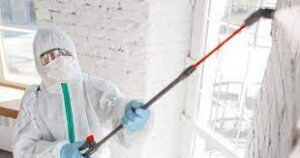Mold Removal Process Davie
Molds and fungus are common in the environment, but when they invade a home or other building, they can be dangerous. Depending on the data needed, many procedures can be employed to gather mold samples. Airborne mold spore samples can disclose information about mold colonies that have grown large and healthy enough to speculate, as opposed to bulk samples, tape lifts, and swabs, which can only reveal information about a single colony. We offer mold testing for both cultural and non-cultural samples to determine whether the place has been fully infested by the fungus. A main annoyance is mold. Your shower’s grout lines turn black, drywall turns discolored, black patches appear on siding, decks turn dark, and it develops on and rots moist wood everywhere. It may even be harmful to your health. Microscopically small spores released by mold can lead to allergic reactions, runny noses, and sneezing, as well as offensive and even harmful scents. In a few steps, we’ll go through what kills mold, how to get rid of black mold, how to kill mold on wood, and how to remove mold.

How to Identify Mold in Davie
To access the mold growing inside the wall, you must first open it up. Since the wall needs to be repaired anyhow, don’t be afraid to cut the drywall back past the point of evident damage in order to find all the mold and allow the wall to dry.
- Before severing any electrical lines, locate them first by drilling a hole through the damaged area.
- Before cutting, turn off the electricity to the outlets.
- To prevent the spread of mold spores, mist the moldy drywall and insulation with the pump sprayer.
- Double-bag moldy items in strong plastic bags, then knot the bags closed.
- You’re likely to uncover rot if the moisture damage has been disregarded or ignored for a long time.
- If removal is difficult, treat the afflicted sections with a wood preservative after washing the wood and allowing it to dry.
- Where removal is possible, remove and replace soft, spongy studs and wall sheathing. then use pressure-treated timber to double up any rotted members.
Cleaning Methods for Surface Mold in Davie
Surface molds can develop in almost any moist environment, including shower tile grout lines. Using a mold cleanup solution of 1/2 cup bleach, 1 quart of water, and a little detergent, they’re simple to scrub away. During mold treatment, the bleach in the cleaning solution kills the mould. The detergent helps peel it off the surface so you can rinse it off and it won’t come back as soon. Even while cleaning anything that isn’t especially dirty, you should protect yourself from mold and the bleach solution by using long sleeves, long pants, plastic or rubber gloves, and goggles. Reapply the cleaning solution and let it sit for a short while if the mold is still present after a brisk scrub. To get rid of any mold, lightly clean once more after that.
Seal the cleaned surfaces once they are fully dry to stop further moisture intrusion. Seal tile joints using grout sealer to help with your effort to eliminate mold (available at home improvement stores and tile shops).
Tips for Avoiding Mold While Living in Davie
Focus on preventing mold in the future if you know how to get rid of it. The majority of mold may be avoided by controlling moisture. The worst infestations typically start in crawl spaces that are damp, attics, walls where water seeps in from the outside, and basements with poor foundation drainage. Stopping leaks, making sure attics have enough ventilation, maintaining dry crawl spaces, and directing water away from the foundation are the best ways to stop mold growth.
Determine whether the mold in your basement has the potential to affect the areas of your house where people who live upstairs. Mildewcide in paint can be used to control surface mold in moist areas like bathrooms and outdoors in shady areas. Several paints already include mildew ide.

Safety Precautions for Mold Removal in Davie
If you need to get rid of mold spore concentrations or black mold that covers more than a few square feet, we suggest adopting the following precautions:
- Wear out-of-date clothing and footwear that you can wash or discard after the cleanup is finished.
- Wear protective N-95 or P-100 respirators, as well as gloves and goggles.
- Open a window and place an old box fan or an inexpensive new one to ventilate the space while you work. When you’re done cleaning, throw it away since it’s practically hard to get rid of the spores.
- Moldy carpet should be double-bagged and disposed of in trash bags after being covered in 6-mm plastic and taped. While you work, mist moldy areas with a garden sprayer to reduce airborne spores.
- To contain spores, turn off your heater and air conditioner, cover ducts, and close doors.
- Use a utility knife to cut the carpet and padding into 6 x 8-foot portions.
- Mist the surfaces with water using a pump sprayer to prevent spores from spreading, then wrap up the sections. For disposal, double-wrap them in 6-mm plastic and tape them with duct tape.
- Expert advice: Put on protective clothes and open a window-mounted exhaust fan.
- Keep the damaged area sealed up.
- Use overlapping plastic sheeting to create a barrier that is taped to the floor and wall that covers the doorway.
- Tape and cover all of the room’s air ducts with plastic.
- Crack up rotten walls
- Use a pry bar and block of wood to pry baseboards and trim away from hazardous areas.
- Use a screwdriver to probe badly discolored or moistened walls to find and expose concealed mold and moisture damage in the insulation and wall frame.
- After moistening, place moldy items in bags.
